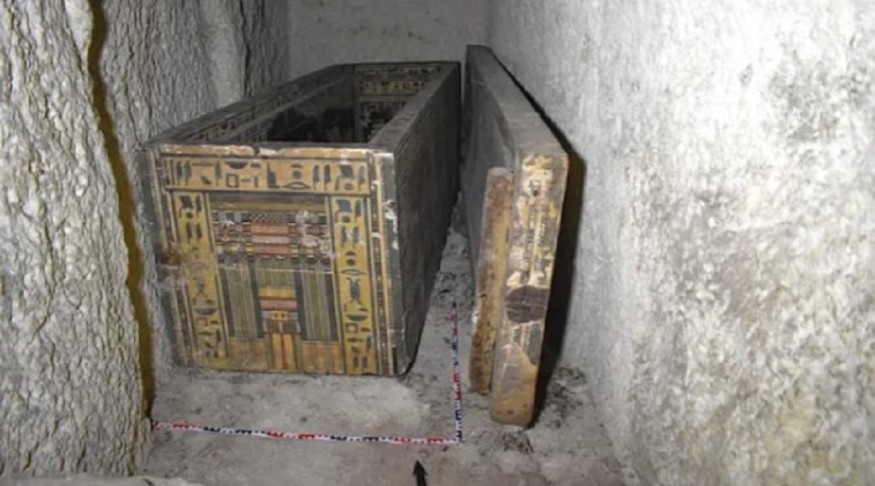
Archaeologists have found the ancient tomb of "Idi," the daughter of a local governor in Egypt. This tomb, which dates back about 4,000 years to the Middle Kingdom period, was discovered near the Nile River in Upper Egypt.
It is believed to be from the time between 2030 and 1640 B.C. The findings were shared by the Egyptian Ministry of Tourism and Antiquities on social media.
Tomb of Ancient Egyptian Governor's Daughter Discovered
Inside the tomb, archaeologists found two coffins, one placed inside the other. The larger coffin measures 8.6 feet long, while the smaller one is 7.5 feet long. Kathlyn Cooney, a professor of ancient Egyptian art and architecture, described the discovery of two intact coffins as "remarkable."
She pointed out that these coffins are not only well-preserved but also covered in intricate texts. These texts were meant to guide the deceased through the Underworld, the ancient Egyptian afterlife.
Caroline Arbuckle, an assistant professor of history, shared her excitement about the coffin texts, explaining that studying them could help us learn more about how the ancient Egyptians viewed the afterlife.
Idi lived during the reign of Senwosret I, a pharaoh who ruled from about 1961 to 1917 B.C. Her father, Djefaihapi, was the governor of Asyut, a wealthy province during that time.
Although robbers invaded her tomb in ancient times, some fragments of her skeleton remained. Scientists found that Idi likely died before reaching the age of 40 and had a congenital defect in one of her feet.
Recent Findings Include Bronze Sword, Artifacts from Idi's Tomb
In addition to the coffins, the excavation revealed other important artifacts, including shattered jars and wooden figurines. One of the figurines is a standing woman, which may represent Idi herself. Cooney mentioned that if this figurine indeed represents her, it would add to a limited collection of items related to her burial.
Francesco Tiradritti, an Egyptology professor, speculated that a second figurine might depict a woman in motion, possibly symbolizing Idi's soul leaving the tomb. He expressed curiosity, saying, "I wonder if that statue represents the soul of Idi emerging from the tomb."
Wolfram Grajetzki, another Egyptologist, pointed out that the hieroglyphs on one coffin refer to Idi as the "lady of the house," highlighting her status in ancient Egyptian society. He noted that many tombs have been discovered in Asyut over the last 130 years, but many of those were found through questionable excavations.
He expressed satisfaction that this tomb was excavated by a professional team, emphasizing the importance of proper documentation in these discoveries.
The excavation was carried out by a team from the University of Sohag in Egypt, in collaboration with researchers from The Free University of Berlin.
In addition to the tomb of Idi, archaeologists recently found a bronze sword linked to a powerful ancient Egyptian pharaoh. This sword was uncovered at a military barracks site called Tell Al-Abqain, which dates back about 3,000 years, according to The Sun.
The discovery of these artifacts gives historians a glimpse into the lives of ancient Egyptians and the practices that surrounded death and burial during their time.
© 2025 ScienceTimes.com All rights reserved. Do not reproduce without permission. The window to the world of Science Times.












